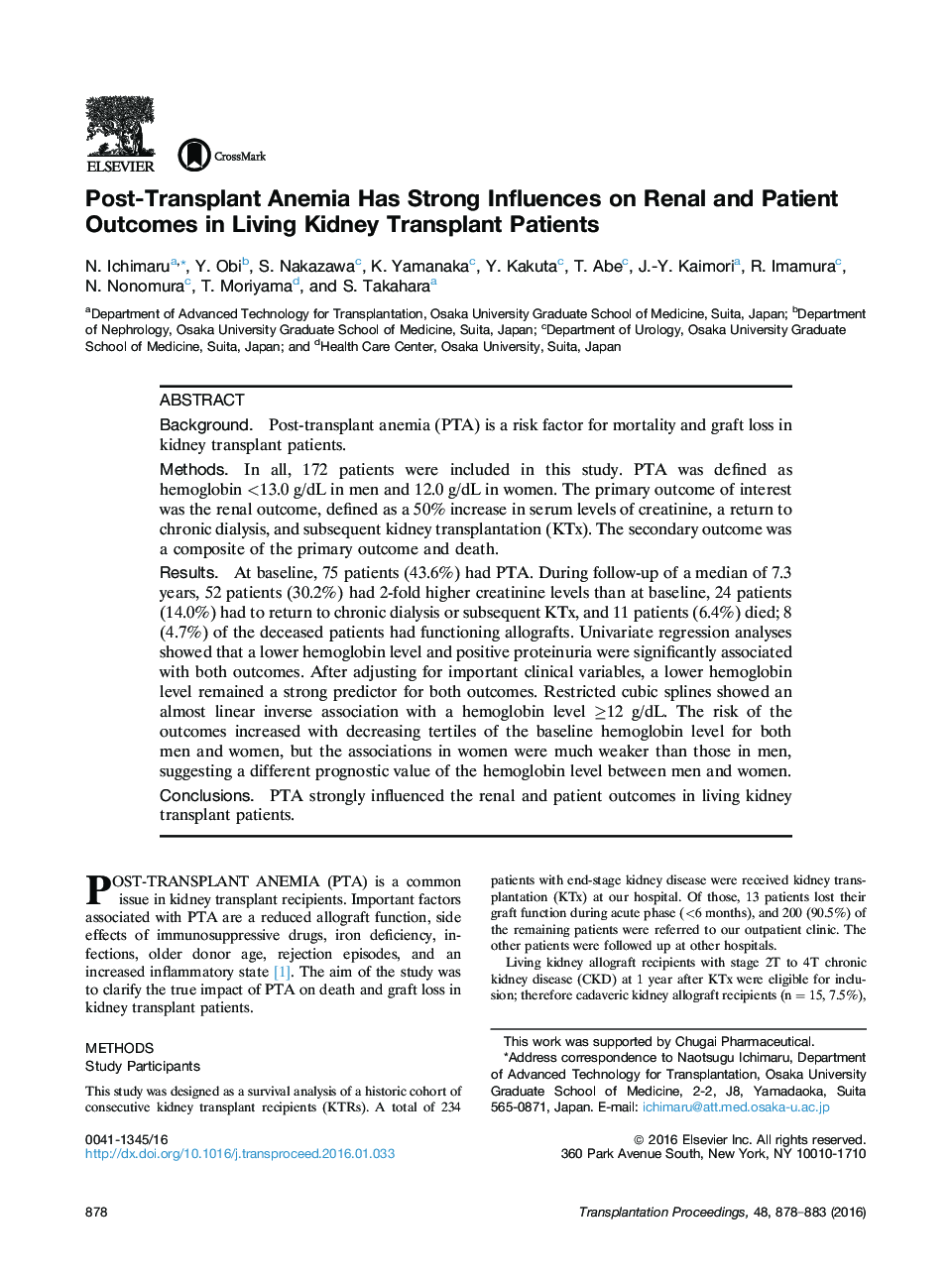| Article ID | Journal | Published Year | Pages | File Type |
|---|---|---|---|---|
| 6246436 | Transplantation Proceedings | 2016 | 6 Pages |
â¢Lower hemoglobin and proteinuria levels were associated with renal and patient outcomes.â¢Restricted cubic splines showed inverse association in the range of Hb â¥12 g/dL.â¢The risks in women were much weaker than those in men.
BackgroundPost-transplant anemia (PTA) is a risk factor for mortality and graft loss in kidney transplant patients.MethodsIn all, 172 patients were included in this study. PTA was defined as hemoglobin <13.0 g/dL in men and 12.0 g/dL in women. The primary outcome of interest was the renal outcome, defined as a 50% increase in serum levels of creatinine, a return to chronic dialysis, and subsequent kidney transplantation (KTx). The secondary outcome was a composite of the primary outcome and death.ResultsAt baseline, 75 patients (43.6%) had PTA. During follow-up of a median of 7.3 years, 52 patients (30.2%) had 2-fold higher creatinine levels than at baseline, 24 patients (14.0%) had to return to chronic dialysis or subsequent KTx, and 11 patients (6.4%) died; 8 (4.7%) of the deceased patients had functioning allografts. Univariate regression analyses showed that a lower hemoglobin level and positive proteinuria were significantly associated with both outcomes. After adjusting for important clinical variables, a lower hemoglobin level remained a strong predictor for both outcomes. Restricted cubic splines showed an almost linear inverse association with a hemoglobin level â¥12 g/dL. The risk of the outcomes increased with decreasing tertiles of the baseline hemoglobin level for both men and women, but the associations in women were much weaker than those in men, suggesting a different prognostic value of the hemoglobin level between men and women.ConclusionsPTA strongly influenced the renal and patient outcomes in living kidney transplant patients.
